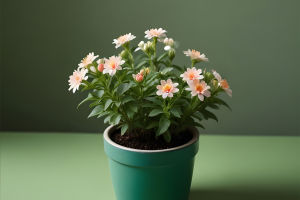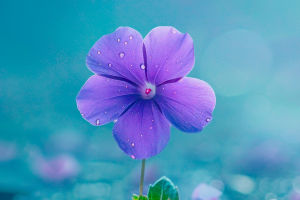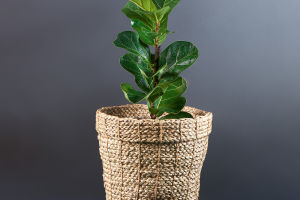Greetings Lykkers! As the summer heat intensifies, water scarcity becomes a concern for many plants.
Flowers and other plants tend to lose water quickly during the warmer months, which can lead to dehydration and hinder growth.
How one farmer is fighting water scarcity
Video by Reuters
Understanding how plants lose water and the factors that contribute to this process is essential for gardeners and plant enthusiasts. In this article, we will explore how water is lost from plants, why flowers struggle with water during summer, and how to manage this issue to ensure healthy growth.
How Plants Lose Water
Plants primarily lose water through a process known as transpiration, which occurs when water evaporates from the surface of leaves, stems, and flowers. The stomata, small pores located on the surface of leaves, are responsible for regulating this water loss. When plants take in carbon dioxide for photosynthesis, the stomata open, allowing the exchange of gases, including water vapor. This process plays a vital role in cooling the plant and enabling the uptake of nutrients from the soil.
Transpiration is a natural and necessary function for plants, but during hot summer days, water evaporates more quickly than the plant can replace it, leading to dehydration. This is especially true for flowers and plants in areas where water is scarce or rainfall is minimal. As a result, gardeners need to be extra vigilant about watering and creating the right conditions for their plants to retain moisture.
The Role of Evaporation in Water Loss
Evaporation is another key factor in the loss of water from plants. This occurs when water from the soil and plant tissues evaporates into the air due to higher temperatures and low humidity. During summer, the increased heat speeds up this process, causing water to evaporate quickly from the plant’s surface, especially during the hottest parts of the day.
In addition to the heat, wind and sunlight also contribute to increased evaporation rates. Wind accelerates the movement of water vapor away from the plant’s surface, making it harder for the plant to retain moisture. Similarly, direct sunlight can increase the temperature of the leaves, further promoting evaporation and depleting the plant’s water reserves. The combination of all these factors can lead to a significant loss of water, which can affect the overall health of flowers and other plants.
Why Flowers Are Particularly Affected
Flowers are particularly susceptible to water loss during the summer months for several reasons. First, many flowers have large, thin petals that allow water to evaporate more easily. Their delicate structures are designed to attract pollinators, but they also make the flowers more vulnerable to dehydration. When flowers are unable to take in enough water to replace what is lost through transpiration and evaporation, they begin to wilt and droop, and in extreme cases, they may die.
Another reason flowers are affected is that they are often grown in containers or pots, where the soil can dry out more quickly compared to garden beds. The limited root space in containers means that the plant has less access to water, which makes it more difficult for the flower to maintain hydration. Additionally, many flowers require more frequent watering during the summer months, but if the watering schedule is inconsistent, they can quickly become stressed.
How to Manage Water Loss
There are several strategies that gardeners can use to manage water loss and help their flowers thrive during the summer. One of the most effective ways is to water plants deeply and consistently. Deep watering encourages the roots to grow deeper into the soil, where they can access moisture that is less affected by evaporation. Watering early in the morning or late in the evening, when temperatures are cooler, can also help reduce the amount of water lost to evaporation.
In addition to proper watering, mulching around the base of plants can help retain moisture in the soil. Mulch acts as a barrier that prevents water from evaporating too quickly, keeping the soil moist for longer periods. Organic mulches like wood chips or compost also provide nutrients as they break down, benefiting plant health.
Another important factor to consider is the type of plants being grown. Choosing drought-tolerant flowers that are adapted to survive in hot and dry conditions can help reduce the need for frequent watering. These plants have evolved to retain moisture more effectively and are better equipped to handle the stress of summer heat.
Creating the Right Environment for Healthy Growth
To help plants retain water and thrive, it’s important to create an environment that minimizes stress. Providing shade during the hottest parts of the day can protect flowers from excessive sunlight, reducing evaporation rates. Using shade cloth or strategically placing taller plants around flowers can create a cooler microclimate, allowing them to conserve moisture.
Additionally, ensuring that plants have well-drained soil is crucial for preventing waterlogging, which can damage the roots and hinder the plant’s ability to take up water. Good soil drainage allows the plant to take in the right amount of moisture without being overwhelmed by excess water.
Conclusion: Understanding Water Loss
In conclusion, understanding how plants lose water and the factors that contribute to this process is key to maintaining healthy flowers during the summer months. By managing transpiration, evaporation, and watering schedules, gardeners can help their flowers conserve moisture and thrive even in the heat of summer. Whether it’s through deep watering, mulching, or selecting drought-tolerant plants, there are many ways to ensure that your garden remains vibrant and full of life, no matter how hot the weather gets.
Thank you for reading, Lykkers! We hope these tips help you manage water loss and keep your plants healthy all summer long.


